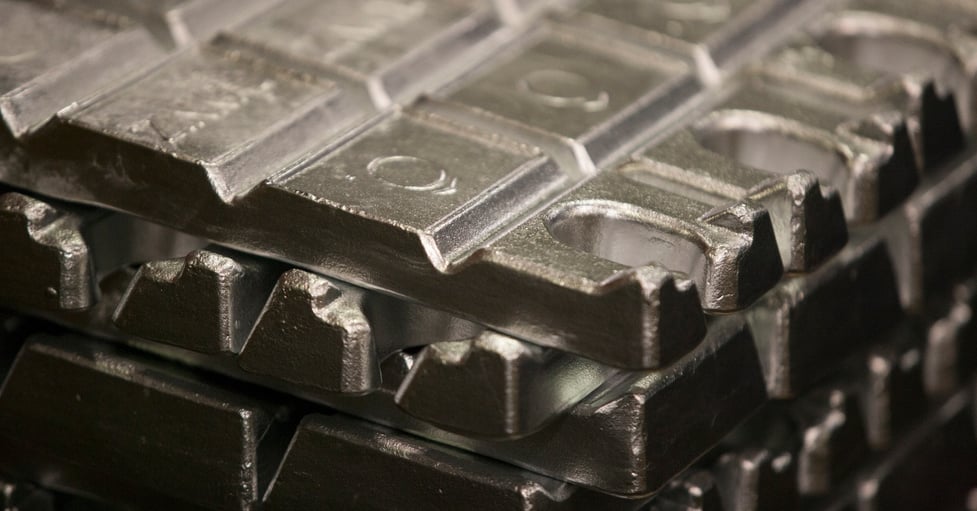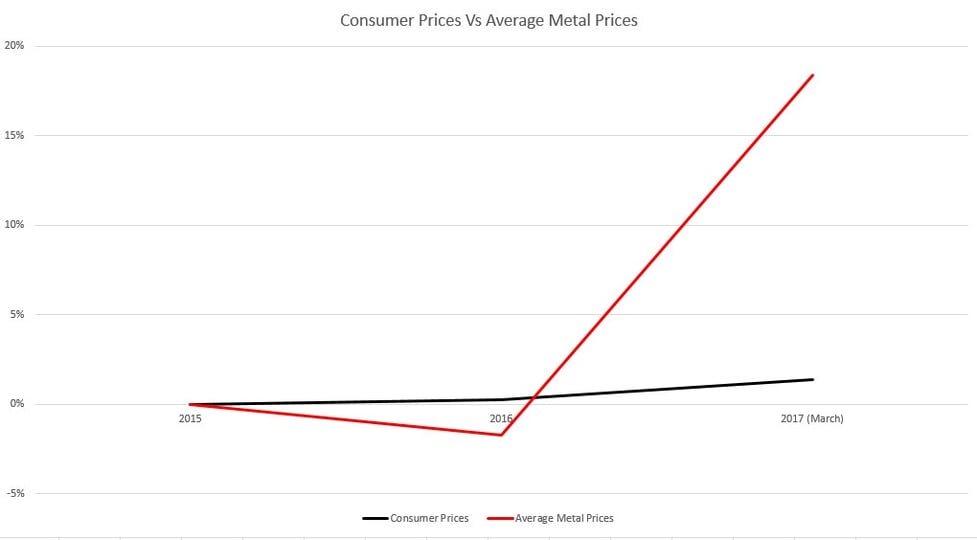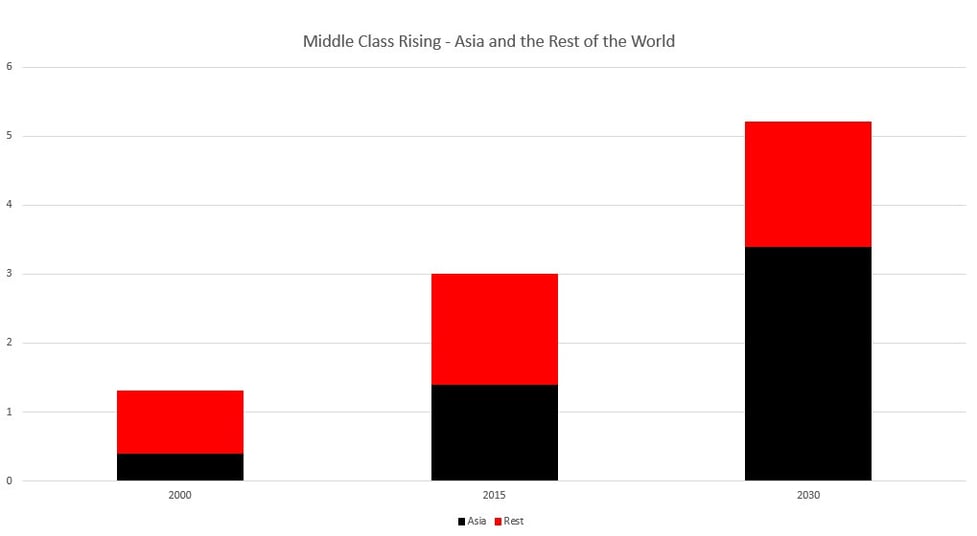As winner of numerous international awards, Bruschi Spa is known for its innovative approach in design and technology. We are glad to share our insights and experiences with the industry members.
How to face commodity prices volatility
Commodity prices volatility is driven by worldwide demand and other variables: it is basically about rise and fall, but there are different options in order to optimize the cost. In particular, this article focuses on metal and tries to find solutions on how a die caster can help a manufacturer to avoid the increase of production costs.

Commodity prices volatility impacts on economy: some possible reasons
There are about five main reasons for commodity prices volatility. Below a little explanation on them.
State of commodity market
It is basically about supply and demand. If supplier drives a condition of oversupplying prices tend to be lower but, on the other hand, if demand is greater than supplier possibilities prices tend to be higher. Due to globalization, also if the demand rise just in a part of the world, for examples in emerging economies areas, this affects fluctuation of markets in the whole world.
Technical condition of the market
Investors, traders, and other market participants use the same price charts. This situation, related to the human behaviour and to globalization, improves prices volatility in case of a big issue or a lucky trend.
Speculation in commodity markets
The third reason is about the role of speculation in commodity markets. There are many different points of view about speculation in commodity markets: some people think it is a valuable economic function, others think that financial markets in terms of commodity should be disconnected from real economy. Whatever you can think about it, the role of speculation is undeniable for commodity prices volatility.
Interaction between physical and financial markets
The critical issue between physical and financial markets is related to the lack of data. In fact, price volatility in commodity markets is strictly linked to uncertainty. The quality and timeliness of data, related to territories where raw materials are, does not help market stability.
Global macroeconomic landscape
Prices of commodities are related to changes in the global macroeconomic landscape. Economical and political issues, or natural disasters, can affect price.
As said, obviously reasons for commodity prices volatility are led by many variables, but in this article we want to focus on the first reason listed: from the angle of metals and products demanded by middle class in emerging economies.
Focus on metal
Raw materials have a huge impact on production costs: this is why it is important to manage commodity prices volatility. To define these prices many variables are involved: above all, the rise of metal prices is led by middle class’s products demand in emerging economies and especially in Asia.
This is true for any kind of commodity, but mainly for metals.
Metal is directly liked to the economy situation and it is not considered a safe asset: in fact, a decline in metal prices leads to decline of the economy.
In these terms, to analyse the commodity market it could be considered an economic indicator about the situation: an overview about the present and a forecast for the demand.
Obviously, these commodity prices volatility impact on zinc die casters and manufacturers but, as I said before, metal price could be used as an important KPI to understand present and future of economy.
Consumer prices related to commodity prices volatility
From 2015 to 2017 (March), according to World Bank Group, metal commodity prices are increased by 17% while consumer prices, measured by OECD have grown only by 1,68%. This is the huge issue because the inflation rate forecast for 2018, around 2,17% according to OECD Inflation Forecast, will not fix the gap.

Obviously every company or industry has its particular situation, but the trend is undeniable.
In this terms profit margins, related to consumer prices, have been decreased due to an important increase in the cost base. In addition, became more volatile and unpredictable, because of commodity prices fluctuations. This trend pushed manufacturers to an aggressive focus on cost saving to avoid an unacceptable increase of customer prices. This is valid for the entire manufacturer industry, but especially for foundry in Europe and in North America. In particular for die casting industry, which is strictly related to a few raw materials such as zinc, copper, aluminium, magnesium, lead, pewter and tin-based alloys.
This is about the past. What about the future?
The rise of middle class consumer
Due to middle class consumer in emerging economies, commodity prices have been raised up and western manufacturers are paying the price for that.
According to the Brookings Institution the global middle class is expected to rise from 3 billions in 2015, to over 5 billions in 2030. This forecast is about global situation, but most of this increase will be in Asia. If, in addition to this, you consider the fluctuations between euro and dollar this opens an interesting scenario.

How to manage commodity prices volatility in metal terms
As said commodity prices volatility could be a huge issue to manage. Below you can find some strategies to follow in order to lead your business in case of an important increased of commodity prices.
- Being a part of a larger buying group allows more negotiating power
- Managing financial derivatives for commodity sector
- Recycling and reusing your scraps
These strategies could be useful to manage commodity prices volatility, but it is impossible to consider them as structural changes: above all, if the subject of discussion is about metals and manufacturing, in particular die casting. In fact, to go into depth on company issues about price it will be definitely necessary to work on production side and not only on financial side.
Work on production side: the co-design activity
In terms of die casting and manufacturing, an important service that a die caster can offer to its client is co-design: a fundamental selection of activities to increase the value of the products and cutting costs.
Co-design is the collaboration between the client and the die casting supplier in an important moment in product design step. In fact, during this phase, the exchange of information and experiences allows the supplier to highlight critical points and qualities requested by the client such as aesthetical, functional and structural ones.
Weight reduction, no further machining, die optimization are only some of advantages in a production cycle which involves design, casting, machining operations and assembly. Benefits that allow to save material and to avoid extra costs.
That is the main point.
Working on production side is the long-term way to manage commodity prices volatility.
If you want to be updated on trends and innovations in die casting industry, please subscribe to our blog; and if you have any comments or questions, please feel free to fill in the form here below.

